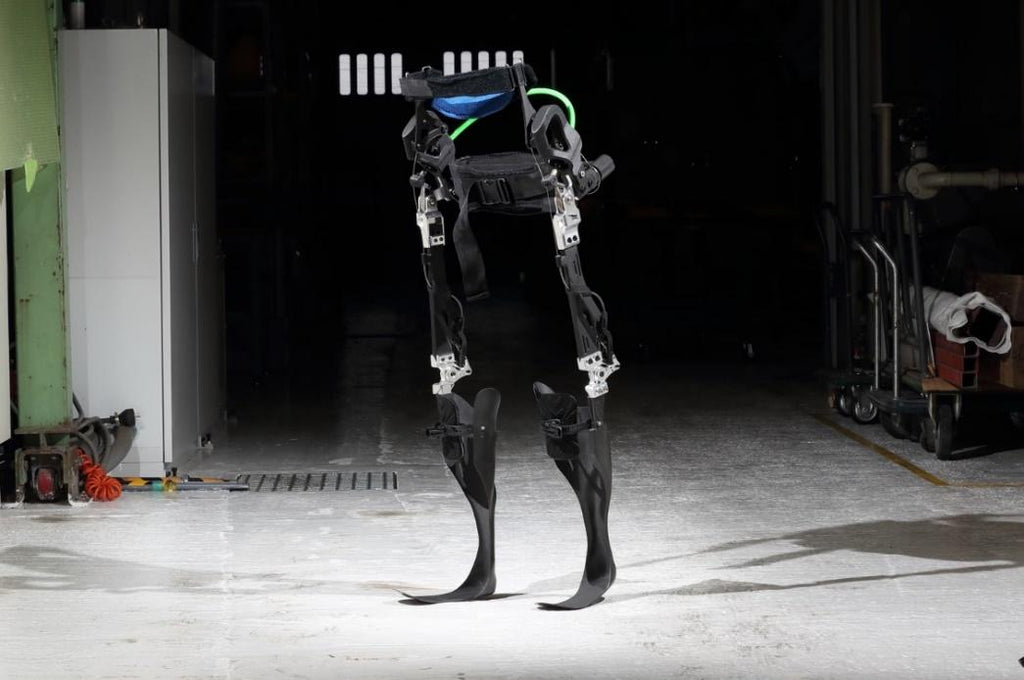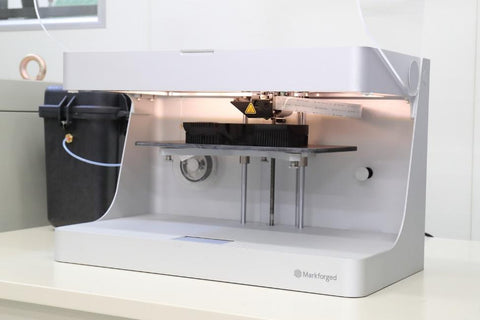
株式会社UCHIDA様は、複合材料「炭素繊維強化プラスチック(CFRP)」を用いた試作・開発を行っています。2018年に創立50周年を迎え、設計開発から製作・試験までの全ての工程を社内で対応し、あらゆるニーズに応えています。
CFRPは、軽量かつ高強度であることから、自動車、航空宇宙、医療、ドローン、アートなどの幅広い業界で使用されている新素材です。UCHIDA様は、2016年にフランスで開催された複合材料業界の世界最大の展示会「Journals and Exhibitions on Composites」にて「Innovation Award」の受賞経験もある、まさに世界レベルのCFRP成形技術のプロフェッショナルです。

UCHIDA様は、CFRP成形技術の開発にMarkforgedの連続繊維CFRPの3Dプリンター「Mark Two」を導入されました。これにより、リードタイムを短縮させることができ、試作・開発プロセスを効率化させています。

C-FREXは、UCHIDA様が開発しているCFRP製の長下肢装具です。
長下肢装具は、脊髄損傷者の2足歩行を助けるリハビリ装具のことをいいます。従来の下肢装具の課題であった重さ及び脆弱さを改善するため、C-FREXでは大腿・下腿ソケット部に軽量で高強度、高弾性のCFRPを使用し、UCHIDA様のCFRP成形技術を活かして開発が進められています。
※C-FREXの説明は、貴社ホームページの内容を参考にさせていただきました。
導入の背景:開発スピード向上とコスト削減
「C-FREX」(シーフレックス)の開発を担当されている原様は、
「我々が開発するリハビリ装具は人と装具の装着感が歩行動作に大きく影響を与えるため、設計・試作・評価のサイクルを何度も繰り返しながら開発を進めます。従来は構造部材に金属(アルミ)を使っていたため、開発スピードやコストの面で課題となっていました。そのため金属加工をする前の簡易検討を目的にMarkforgedを導入しました。現在では、強度や耐久性の面でも実用性が高いことがわかり、最終製品への採用も検討しています」
とお話しされていました。
また、数ある3Dプリンターの中でMarkfirgedを採用した理由としては、
「任意の層に、任意の角度で炭素繊維を使った補強が可能なため、弊社が培ってきたCFRP成形の技術が活かせる」
と考えられたそうです。
運用方法と効果:開発初期段階の不具合の発見と対策
使用3Dプリンター:Markforged Mark Two
使用用途:主にリハビリ用装具の開発、製造時に使用する治工具
装具膝機構における開発リードタイム:
金属加工部品を使用 3~4週間
3Dプリンターを使用 5~10日

原様によると開発初期の不具合の発見と対策ができる点が大きな変化だったようです。
「設計者自身が計画から設計、実装、テストまでのプロセスを何度も繰り返して行うことができ、開発初期の不具合を早期に対策することができました。特に人と機械の複合領域である福祉機器開発では実装してわかることも多く、Mark Twoはそれらを検証するための十分な強度を持っています」。
今後の展望
「我々が開発する装具は人の骨格に合わせてサイズ調整しますが、身長や体格は人によって様々です。3Dプリンター部品は金型が必要無いため、オーダーメードで細かいサイズ展開が可能です。採寸からモデル作成までを自動化することで、ユーザーの身体にフィットし、デザイン性にも優れた装具をより早く・安く提供できると考えています。特に成長が早い子供用に活用していきたいと思っています」。と原様はお話しされていました。

CFRPの開発でMark Twoを有効に活用されているUCHIDA様。今年に入り、さらにMarkforgedのOnyx Oneも増設され、開発サイクルを加速させています。現在、試作・開発段階にあるC-FREXは、2019年末より実証試験に入る予定とのことです。
また、3Dプリンターによる部品の強度・耐久性が満たされれば、最終製品への採用も視野に入れているとのことですので、UCHIDA様の今後の開発から目が離せません。
